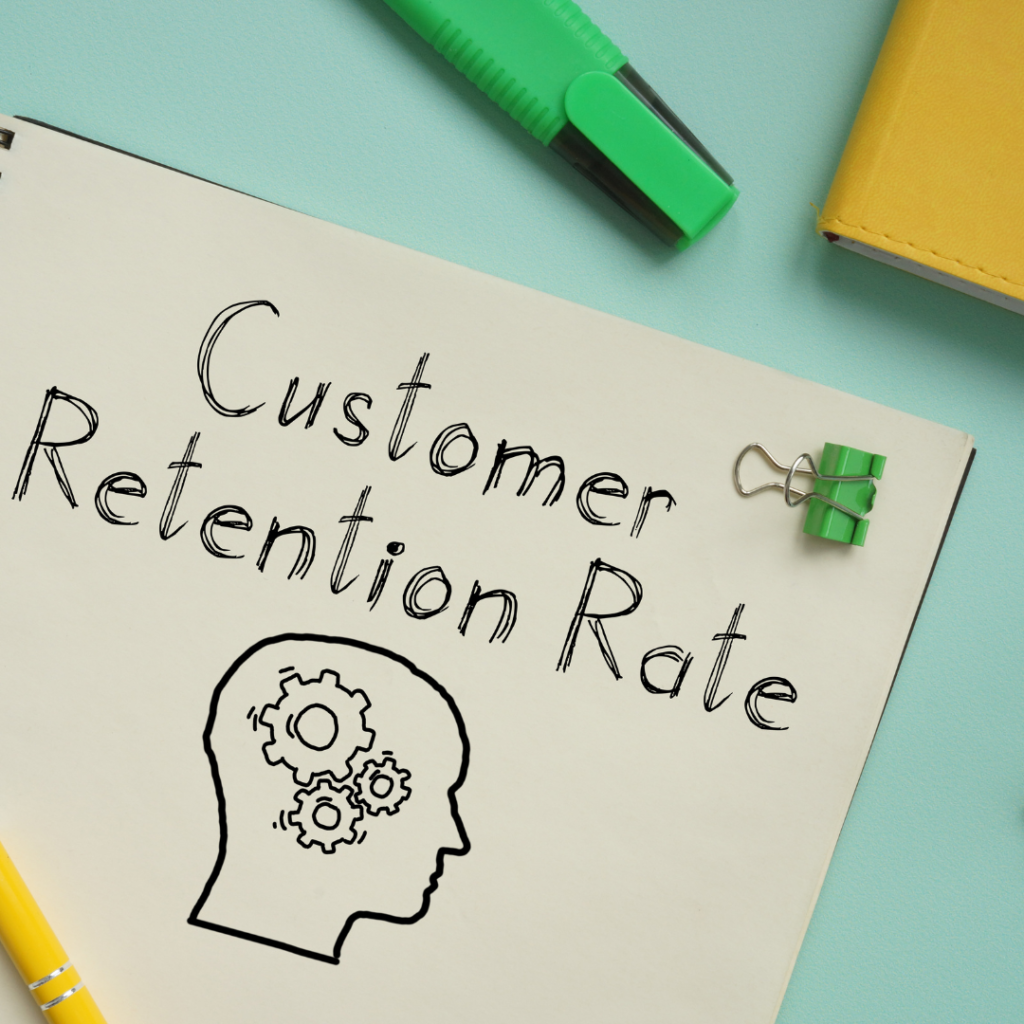What Is App Store Optimization?
App Store Optimization (ASO) is the process of improving the visibility of a mobile app in an app store, such as the Apple App Store or Google Play Store. It involves optimizing various elements of an app’s listing to increase its ranking and attract more users.
ASO is similar to search engine optimization (SEO) for websites, but it is specifically focused on mobile apps. The goal of ASO is to increase the app’s visibility in search results, which can lead to more downloads and higher rankings in the app store charts.
Key aspects of ASO include optimizing the app’s title, description, keywords, and visual assets (such as icons and screenshots). By carefully crafting these elements to match popular search queries and user preferences, developers can improve their app’s chances of being discovered by potential users.
ASO is an ongoing process that requires monitoring and adjusting to stay competitive in the app stores. For beginners, understanding the basics of ASO is crucial to successfully launching and promoting a mobile app.
Why Is ASO Important?

ASO is crucial for app success as it directly impacts visibility and downloads in app stores. It helps apps stand out in a crowded marketplace, increases organic traffic, and boosts conversion rates. ASO also enhances user experience by ensuring that apps are relevant and easily discoverable. Additionally, ASO can lead to higher rankings in app store search results and charts, increasing credibility and trustworthiness among users.
– Boosts app visibility and organic traffic
– Improves conversion rates and user experience
– Increases app store search rankings and credibility
– Helps apps stand out in a competitive market
– Enhances discoverability and trustworthiness
ASO Basics
App Store Optimization (ASO) is a critical component of mobile app marketing, focused on improving your app’s visibility and ranking in app store search results.
By optimizing various elements of your app’s listing, such as the app title, description, keywords, and visual assets, you can attract more users and increase downloads.
Understanding the fundamentals of ASO is essential for effectively promoting your app and maximizing its success in the competitive app marketplace.
ASO for Different App Stores: Tailor your ASO strategy for each app store to account for their unique algorithms and user behaviours.
To optimize your app’s visibility, tailor your ASO strategy for each app store, considering their distinct algorithms and user behaviours. Understanding these differences allows you to craft specific strategies for the Apple App Store and Google Play Store, enhancing your app’s chances of ranking higher and reaching the right audience.
Apple App Store vs. Google Play: Understand the key differences between the two stores, including user demographics, review processes, and design guidelines.
Apple App Store vs. Google Play: Differentiate between the two stores by recognizing their unique attributes. Understand the user demographics, review processes, and design guidelines specific to each platform. Apple’s App Store tends to attract users with higher purchasing power, while Google Play caters to a more diverse and global audience. Additionally, the review process and design guidelines vary, impacting how apps are presented and perceived by users. Familiarity with these differences is crucial for optimizing your app’s presence on each platform.
Apple App Store Ranking Factors: Focus on factors like app title, keywords, ratings, and reviews, as these heavily influence your app’s ranking on the Apple App Store.
Apple App Store Ranking Factors: To improve your app’s ranking on the Apple App Store, prioritize key factors such as app title, keywords, ratings, and reviews.
A compelling app title with relevant keywords boosts visibility and discoverability. Positive ratings and reviews signal app quality and user satisfaction, positively impacting rankings.
Regularly updating your app and responding to user feedback also contribute to higher rankings, reflecting Apple’s emphasis on user experience and engagement.
Google Play Store Ranking Factors: Pay attention to app title, description, keywords, user engagement metrics, and regular updates to improve your app’s visibility on the Google Play Store.
Google Play Store Ranking Factors: Improve your app’s visibility on the Google Play Store by focusing on key factors such as app title, description, keywords, user engagement metrics, and regular updates.
A clear and informative app title and description can attract users and improve search rankings. Relevant keywords help users find your app in search results. User engagement metrics, such as app downloads, retention rates, and user ratings, are crucial for determining app popularity and ranking.
Regularly updating your app with new features and improvements also signals to Google that your app is active and relevant, which can positively impact its visibility and ranking.
Strategies to help you rank better on app stores
ASO Keyword Research

1. Brainstorm Keywords: Begin by brainstorming keywords that describe your app’s features, functions, and appeal to your target audience. Consider synonyms and variations of these keywords.
2. Use Keyword Tools: Utilize ASO keyword research tools such as App Annie, Sensor Tower, or Google Keyword Planner to expand your list. These tools provide insights into keyword search volume, competition level, and relevance.
3. Prioritize Keywords: Prioritize your list of keywords based on their relevance to your app, search volume (how often users search for them), and competition (how many apps are using them). Focus on keywords that strike a balance between high search volume and manageable competition.
Try ASO Keyword Research Tools
Utilize tools like App Annie, Sensor Tower, and Mobile Action to research keywords, track rankings, and analyze competitors.
These tools provide valuable insights into keyword search volume, competition, and trends, helping you identify the most effective keywords for your app.
Additionally, they allow you to track your app’s rankings for specific keywords over time and compare your performance to that of your competitors. By leveraging these tools, you can optimize your ASO strategy and improve your app’s visibility and downloads.
Analyze the Competition
Study competitors’ app listings to identify keywords they are targeting and understand their ASO strategies. Look at their app titles, descriptions, and keywords to see which keywords they prioritize.
Pay attention to their app ratings, reviews, and download numbers to gauge user engagement.
Use this information to refine your own keyword strategy and identify opportunities for improvement. By learning from your competitors, you can optimize your ASO strategy and improve your app’s visibility and downloads.
Analyze Search Ad Data
Leverage search ad data to identify high-performing keywords and gain insights into user search behavior. Look at metrics such as click-through rates, conversion rates, and cost-per-install for different keywords to identify which ones are driving the most traffic and conversions.
Use this data to optimize your keyword strategy by focusing on the most effective keywords and improving your app’s visibility in search results. By analyzing search ad data, you can refine your ASO strategy and increase your app’s chances of being discovered by users.
How to Do App Store Optimization
Optimize Your App’s Title and Subtitle:
1. Craft an Engaging Title: Your app’s title should be concise, descriptive, and include relevant keywords to improve search visibility. It should also convey the app’s main purpose or unique selling point.
2. Utilize Subtitles: Subtitles (available on the Apple App Store) provide additional space to include relevant keywords and expand on the app’s benefits. Use this space wisely to attract users’ attention and improve search rankings.
3. A/B Test: Consider conducting A/B tests with different titles and subtitles to see which combination performs best in terms of search visibility and user engagement.
4. Update Regularly: Regularly update your app’s title and subtitle based on user feedback, changes in keyword popularity, and updates to your app’s features or functionality. This can help maintain relevance and improve search rankings over time.
Add Keywords (Apple App Store Only)
How to Do App Store Optimization – Add Keywords (Apple App Store Only):
1. Understand Apple’s Guidelines: Familiarize yourself with Apple’s guidelines for keyword usage, including restrictions on keyword length and usage of brand names.
2. Research Relevant Keywords: Use tools like App Annie or Sensor Tower to research keywords relevant to your app’s features, functionality, and target audience.
3. Prioritize Keywords: Select keywords based on their relevance, search volume, and competition. Focus on keywords that are likely to attract your target audience and improve your app’s visibility.
4. Incorporate Keywords Naturally: Integrate selected keywords into your app’s title, subtitle, and description in a way that sounds natural and compelling to users.
5. Monitor Performance: Regularly monitor the performance of your selected keywords to see how they impact your app’s visibility and downloads. Adjust your keyword strategy as needed based on this data.
Write Engaging App Descriptions
1. Understand Your Audience: Tailor your app description to resonate with your target audience. Highlight features and benefits that are most relevant and appealing to them.
2. Focus on Benefits: Instead of just listing features, emphasize how your app solves a problem or improves users’ lives. Use language that is clear, concise, and persuasive.
3. Use Keywords Wisely: Incorporate relevant keywords naturally into your description to improve search visibility. However, avoid keyword stuffing, as it can make your description less readable.
4. Highlight Unique Selling Points: Identify what sets your app apart from competitors and make sure to highlight these unique selling points in your description.
5. Include Social Proof: If your app has received positive reviews or awards, mention them in your description to build credibility and trust with potential users.
6. Update Regularly: Keep your app description up to date with any new features, updates, or improvements to maintain user interest and relevance.
Add Compelling Visual Elements
Adding Compelling Visual Elements to Your Apple App Store and Google Play Store Listing:
1. App Icon: Create a visually appealing and memorable app icon that accurately represents your app’s brand and purpose. Your icon should stand out in a crowded app store and entice users to learn more about your app.
2. Screenshots: Use high-quality screenshots that showcase your app’s key features and user interface. Include captions or annotations to highlight specific elements or functionality.
3. App Preview Video: Create a short, engaging app preview video that demonstrates your app in action. Showcasing how your app works can help users understand its value and functionality better.
4. Promotional Graphics: Use promotional graphics to convey important information, such as limited-time offers, new features, or special promotions. These graphics can help grab users’ attention and encourage them to download your app.
5. Localized Visuals: If your app is available in multiple languages, consider localizing your visual elements to better resonate with users in different regions.
6. Consistent Branding: Ensure that all your visual elements, including your app icon, screenshots, and preview video, maintain a consistent branding style to reinforce your app’s identity and message.
Encourage Reviews and Ratings
Ask for Ratings and Reviews After Positive Actions

Timing is crucial when asking users to rate and review your app. Prompt them after they have completed a positive action, such as making a purchase, completing a level, or using a feature successfully. This approach increases the likelihood of receiving positive feedback, as users are more likely to rate your app favorably when they have had a positive experience. Consider using in-app prompts or notifications to ask for ratings and reviews at the right moment.
Encourage Reviews Through Other Channels
In addition to prompting users to leave reviews within the app, encourage them to share their feedback on other platforms such as social media, your website, or email newsletters. This approach helps broaden your app’s reach and attract more reviews from users who may not regularly visit the app stores. Provide easy-to-use links or buttons in your communications to make it simple for users to leave a review on these other channels.
Set Up Alternative Channels for Negative Feedback
Provide users with alternative channels, such as a feedback form or customer support email, to express negative feedback privately. This approach allows users to share their concerns directly with you instead of posting negative reviews publicly. It also gives you the opportunity to address their issues promptly and improve their experience with your app. Consider including these alternative channels in your app’s settings or support section for easy access.
Ask for Ratings and Reviews After Updates
Take advantage of app updates to ask users to rate and review your app. Highlight the new features or improvements in the update to encourage positive feedback. Timing the request for ratings and reviews after an update can lead to more positive responses, as users may be more inclined to provide feedback when they see that you are actively working to improve the app. Consider using in-app messages or notifications to prompt users to rate and review your app after an update.
Advanced ASO Tactics
Optimize Retention Rates

Optimizing Retention Rates is crucial for the long-term success of your app. It’s more cost-effective to retain existing users than acquire new ones. Here’s how you can do it:
Personalized Experiences: Use data to personalize the user experience. For example, Spotify uses algorithms to recommend music based on listening habits, keeping users engaged.
Incentives and Rewards: Offer incentives like discounts, exclusive content, or in-app rewards for completing certain actions or staying active within the app. This can increase user loyalty and retention.
Push Notifications: Use push notifications to remind users about your app and encourage them to return. However, be mindful not to overdo it, as this can lead to users disabling notifications.
Feedback and Support: Provide avenues for users to provide feedback and receive support. This can help you understand user pain points and improve the app’s overall experience, leading to higher retention rates.
Regular Updates: Continuously update your app with new features, improvements, and content to keep users interested and engaged. This shows that you are committed to providing value and enhancing the user experience.
According to research, increasing user retention rates by just 5% can lead to an increase in profits of 25% to 95%. Therefore, focusing on retention can have a significant impact on your app’s success.
Incorporate Other Marketing Channels
Incorporating Other Marketing Channels is essential for reaching a wider audience and promoting your app effectively. Here’s how you can do it:
1. Social Media: Use platforms like Facebook, Instagram, Twitter, and LinkedIn to promote your app, engage with users, and drive downloads. Share engaging content, run targeted ads, and leverage influencers to reach a larger audience.
2. Email Marketing: Build an email list of interested users and send them regular updates, promotions, and announcements about your app. Email marketing can help you stay connected with your audience and encourage app usage.
3. Influencer Partnerships: Collaborate with influencers in your niche to promote your app to their followers. Influencers can help create buzz around your app and reach a highly targeted audience.
4. App Store Optimization: While not a traditional marketing channel, optimizing your app store listing with relevant keywords, compelling visuals, and a clear description can significantly improve your app’s visibility and downloads.
According to research, incorporating social media marketing into your app promotion strategy can lead to a 25% increase in app downloads. Additionally, apps promoted through influencer marketing see an average engagement rate of 5.7%, compared to just 2.2% for other forms of digital marketing. Therefore, leveraging other marketing channels can greatly improve your app’s performance and reach.
Maximize Your App’s Potential with Ongoing ASO
App Store Optimization (ASO) is not a one-time task but an ongoing process. Here’s how you can continuously improve your ASO strategy to maximize your app’s potential:
1. User Feedback: Regularly gather feedback from users to understand their preferences, pain points, and suggestions. Use this feedback to refine your app’s features and optimize your ASO strategy.
2. Market Trends: Stay updated with the latest trends in the app market, including popular keywords, design trends, and user behavior. Incorporate these trends into your ASO strategy to keep your app relevant and appealing to users.
3. Competitor Analysis: Monitor your competitors’ app store listings, keywords, and strategies. Identify areas where you can improve or differentiate your app to stand out in the market.
4. Regular Updates: Continuously update your app with new features, bug fixes, and improvements based on user feedback and market trends. Update your app’s metadata, including keywords, titles, and descriptions, to reflect these changes and improve your app’s visibility in app store search results.
5. A/B Testing: Experiment with different elements of your app store listing, such as keywords, screenshots, and descriptions, to see what resonates best with your audience. Use A/B testing to optimize your listing for higher conversion rates.
By continuously updating and optimizing your ASO strategy, you can improve your app’s visibility, downloads, and ultimately, its success in the app store.
Encourage and ask users to rate and review your app
Encouraging users to rate and review your app can significantly impact its visibility and credibility. To achieve this, prompt satisfied users to rate and review your app through in-app messages or notifications.
It’s important to time these prompts appropriately, such as after users have completed a positive action or achieved a milestone within the app. Additionally, make it easy for users to leave feedback by providing a direct link to the app store review page.
Avoid redirecting users to external websites or requiring them to log in to leave a review. By implementing these strategies, you can increase the number of reviews and improve your app’s overall rating, leading to higher visibility and more downloads.
Time your triggers
Timing is crucial when prompting users to rate and review your app. To effectively time your triggers, consider the following. Prompt users to rate and review your app after they have completed a meaningful action, such as making a purchase, completing a level, or achieving a milestone.
This ensures that users have had a positive experience and are more likely to leave a favorable review.
Avoid interrupting the user experience with overly frequent or intrusive prompts. Instead, choose moments when users are already engaged with your app and are likely to be receptive to providing feedback.
Use contextual cues to determine the right time to prompt users. For example, if your app is a fitness app, you could prompt users to rate and review after they have completed a workout or achieved a fitness goal. Be mindful of the frequency of your prompts.
Avoid prompting users too often, as this can lead to annoyance and may result in negative reviews. Instead, limit prompts to key moments when users are most likely to be satisfied with your app.
By timing your triggers effectively, you can increase the likelihood of receiving positive reviews and improve your app’s overall rating.
Mix different triggers and prompts
To encourage users to rate and review your app, it’s important to mix different triggers and prompts. This can help keep your requests fresh and engaging. Consider using a variety of methods, such as in-app messages, notifications, and emails, to reach out to users.
Mixing up the timing and content of these prompts is also key. Avoid being repetitive or annoying by varying when and how you ask for feedback. For example, you might send a follow-up email after a user has been using your app for a week, then follow up with an in-app message a month later.
By using different triggers and prompts in a strategic way, you can increase the likelihood that users will rate and review your app, which can help improve its visibility and credibility.
Make leaving a rating or review easy
Making it easy for users to leave a rating or review can significantly increase the likelihood of receiving feedback. To streamline this process, provide a direct link to the app store review page and pre-populate the review form with the user’s details, such as their name and email address.
By removing any barriers that might discourage users from leaving feedback, you can encourage more users to rate and review your app. This can help improve your app’s overall rating and visibility in the app store.
Incentivize users
Incentivizing users to leave a rating or review can be an effective way to encourage feedback and improve your app’s ratings. By offering incentives such as discounts, exclusive content, or in-app rewards, you can motivate users to take the time to provide feedback.
However, it’s important to note that incentivizing users to leave positive reviews can violate app store policies. Instead, focus on incentivizing users to leave honest and constructive feedback, regardless of whether it is positive or negative. This can help you gather valuable insights to improve your app and enhance the user experience.
Respond to reviews on time and properly
Responding to user reviews in a timely and professional manner is crucial for maintaining a positive relationship with your users and improving your app’s reputation. Here’s how you can do it:
1. Monitor Reviews: Regularly monitor user reviews on the app store and other platforms where your app is listed. Set up notifications to alert you to new reviews so you can respond promptly.
2. Acknowledge Feedback: Whether the review is positive or negative, acknowledge the user’s feedback. Thank them for taking the time to provide their thoughts on your app.
3. Address Issues: If a user raises a concern or reports a problem, address it promptly. Offer a solution if possible, and assure the user that their feedback is valued.
4. Stay Professional: Maintain a professional tone in your responses, even if the review is negative. Avoid getting defensive or argumentative, and focus on providing helpful and constructive responses.
5. Show Appreciation: For positive reviews, thank the user for their kind words and let them know that you appreciate their support. This can help build loyalty and encourage other users to leave positive reviews as well.
By responding to reviews on time and properly, you can demonstrate that you value user feedback and are committed to providing a positive user experience.
Prioritize improving app quality

Prioritizing the improvement of your app’s quality is essential for maintaining user satisfaction and app success. To achieve this, regularly gather and analyze user feedback to identify areas for improvement. Pay attention to common complaints or suggestions to prioritize your efforts.
Address bugs, crashes, and other technical issues promptly, as users are more likely to rate your app poorly if they encounter frequent problems. Continuously work on improving the usability and user interface of your app to make it intuitive and easy to navigate, enhancing the overall user experience.
Optimize your app’s performance to ensure it runs smoothly on all devices and operating systems. Slow or laggy apps can frustrate users and lead to negative reviews. Consider adding new features or improving existing ones based on user feedback and industry trends to keep your app competitive and appealing to users.
By prioritizing the improvement of your app’s quality, you can enhance the user experience, increase user satisfaction, and ultimately improve your app’s ratings and success.
Monitor reviews and ratings progress
Monitoring your app’s reviews and ratings is crucial for understanding user feedback and improving your app’s performance. By regularly checking reviews and ratings, you can track changes over time and identify trends that may indicate areas for improvement. This data can also help you gauge user satisfaction and make informed decisions about your app’s development and marketing strategy.
Use tools and analytics to track your app’s reviews and ratings across different platforms. Pay attention to both positive and negative feedback, and look for recurring themes or issues that need to be addressed. By staying proactive and responsive to user feedback, you can continually improve your app and enhance the user experience.
Build a community
Building a community around your app can greatly enhance its success and user engagement. By engaging with your app’s users through social media, forums, and other channels, you can create a space for users to share their experiences, provide feedback, and connect with other users.
Encourage users to share their thoughts, suggestions, and feedback to help improve your app. By actively listening to your community, you can gain valuable insights into how to enhance your app’s features and user experience.
Additionally, building a community can help create brand loyalty and advocacy, as satisfied users are more likely to recommend your app to others. By fostering a strong community around your app, you can create a valuable resource for users and help drive its success.
Understand how you can ask for ratings
When asking users to rate your app, it’s important to understand the guidelines and best practices to ensure compliance and effectiveness. Familiarize yourself with platform-specific rules and regulations regarding app ratings requests.
Consider the timing and context of your request. Asking for a rating immediately after a user has completed a positive action or achieved a milestone within the app can increase the likelihood of receiving a positive rating.
Avoid interrupting the user experience with frequent or intrusive requests. Instead, find subtle and non-disruptive ways to prompt users to rate your app. By following these guidelines, you can effectively ask for ratings and improve your app’s overall rating and visibility.
Create an app rating and review strategy
Creating an app rating and review strategy is crucial for managing and improving your app’s reputation. Start by setting clear goals for your app’s ratings and reviews, such as achieving a certain average rating or increasing the number of reviews.
Define key metrics to track your progress, such as the average rating, the number of reviews, and the percentage of positive reviews.
Outline tactics for soliciting feedback and improving your app’s ratings over time. This may include asking users to rate your app at strategic points in their journey, responding promptly to reviews, and implementing user feedback to enhance your app’s features and usability.
By developing a comprehensive strategy for managing your app’s ratings and reviews, you can increase user satisfaction, drive downloads, and improve your app’s overall success.
Know which tools can help you
Knowing which tools can help you with App Store Optimization (ASO) is essential for improving your app’s visibility and performance. Utilize ASO tools and analytics platforms such as App Annie, Sensor Tower, and Mobile Action to track your app’s performance, monitor reviews, and identify opportunities for improvement.
These tools can provide valuable insights and data to inform your ASO strategy, such as keyword performance, competitor analysis, and user sentiment analysis. By leveraging these tools, you can make informed decisions to optimize your app’s listing and improve its visibility in the app stores.
Use in-app reviews API for Play Store and SKStoreReviewController API for App Store
To streamline the review process and increase user feedback, leverage the in-app reviews API provided by the Play Store and the SKStoreReviewController API for the App Store. These APIs allow you to prompt users to leave reviews directly from your app, making it easier for them to provide feedback. By integrating these APIs into your app, you can encourage more users to leave reviews and improve your app’s overall rating and visibility.
Try gamification tactics for more ratings and reviews
To increase ratings and reviews, consider incorporating gamification tactics into your app. By offering rewards, badges, or points for leaving feedback, you can incentivize users to engage with your app and provide valuable feedback. Make the process fun and engaging to encourage more users to participate. Gamification can not only boost the number of ratings and reviews but also enhance user engagement and retention.












